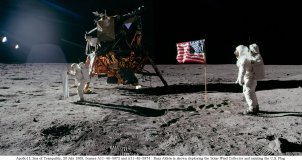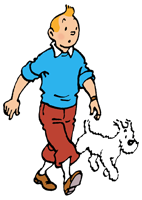1965 J.K. Rowling born – so definitely have a Harry Potter day

Ke Hae Hawaii (Flag Day – see 11 June)
1965 J.K. Rowling born – so definitely have a Harry Potter day

Ke Hae Hawaii (Flag Day – see 11 June)
1907 the first Scouting camp: 8-day Brownsea Island camp. The boys were in four patrols: Wolves, Ravens, Bulls and Curlews, each with a different coloured knot on their shoulder.
They began the day at 6am with cocoa, exercises, prayers, then breakfast at 8am.
Activities were based on campaigning, observing, woodcraft, chivalry, saving lives, and patriotism.
The day ended with games, supper, campfire stories, prayers, 9pm bed.
They passed tests on knots, tracking, the national flag; Baden-Powell told campfire stories of his fighting in Africa.
1987 Thatcher and Mitterand agree to build the Channel tunnel – where can your kids build a tunnel?
International Tiger Day – so be tigers for the day:

http://www.parenting.com/gallery/tiger-face-painting
If you can’t face hunting for your own dinner, you can always have tiger oranges.
Also today:
National Anthem Day (Romania – see 24th January)
National Thai Language Day – see 5th December – here’s how to say hello in Thai
St Olavs Day/Olsok (Norway and Faroe Islands)

1054 Siward, Earl of Northumbria, defeats Macbeth, king of Scotland – older kids might enjoy the BBC’s animated tales or Oddsocks. Actually there’s no ‘ might’ for the latter – kids aged 8+ (and adults) WILL LOVE THEM.
1940 ‘A Wild Hare’, Bugs Bunny debut
1870 Hillaire Belloc born – try this book, it’s lovely (and disturbing)
Finland’s National Sleepy Head Day, when the last person to wake up is woken with water, perhaps even being thrown into a lake.
North Korea Victory Day (over South Korea, 1953)

José Celso Barbosa’s Birthday: (Puerto Rico celebrates founder of their Republican party.)
Columbus found Puerto Rico in 1493, when it was inhabited by the native Taino. From the 16th century Spanish came to colonise the island and used the Taino for forced labour.
When they killed them off with smallpox, etc., they had to import African slaves to work for them. Spain tried to keep the islanders on side by allowing them to vote in Spanish elections, but the slaves kept revolting and the people wanted independence.
To try and dilute this, Spain offered free land to any Europeans wanting to settle on the island.
Around 1890 the US started to think about building a navy, and the Panama Canal, and tried to buy Puerto Rico and Cuba from Spain. Spain said no, but in 1898 America helped Cuba in their revolution, and Spain and America went to war (imagine that happening now).
This resulted in America taking Puerto Rico. The US offered Puerto Ricans American citizenship, but the Puerto Ricans thought this was just so the US could conscript them into WWI.
It is now a Commonwealth of the US, and no one’s really sure what that means. Ricky Martin is Puerto Rican.
Oman Renaissance Day: (Oman celebrates the coronation of their Sultan).

Humans moved from Africa to here and Arabia in the Pleistocene age, during an ice age when many huge plants and other species of human died out.
From 6th century BC to 7th century AD, Oman was ruled by Persian kings, until Islam arrived and Oman became ruled by an imam and got involved in all kinds of Islamic wars.
In 1497 Portugal owned a bit of it, and the Ottoman (Turkish) Navy took Oman’s port in its efforts to control the Persian Gulf.
From the 17th century Oman had its own empire along Africa, including Zanzibar where the Sultan made his palace because of the slave industry.
The Hajar Mountains split the country; the middle, Oman, was ruled by the imam; the coast and the capital, Muscat, was ruled by the sultan from 1920.
But of course they fought, over oil, naturally, and since the ’70s the sultan officially rules everything again.
The central desert of Oman is an important source of meteorites for science.
Make halwa; read 1001 Nights (Aladdin, Ali Baba, Sinbad the Sailor)
Egypt Revolution Day
Egypt is part of Africa, Europe and Asia, making it the world’s only Eurafrasian country. Apparently that’s a word.
It is made up of farmland along the Nile, and Sahara desert. Those are your options.
Around 8,000 B.C. the Sahara desert started to form and hunter-gatherer tribes were forced to settle along the Nile. By 6,000 B.C. the tribes had reached the Stone Age (British tribes got there about 3,000 years later). The first Egyptian hieroglyphics appeared in 3,200 B.C., on some pottery.
Egypt was unified into one kingdom under King Menes c.3150 B.C., and this ‘Old Kingdom’ began building pyramids in 2,700 B.C., including the famous Giza pyramids and Sphinx.
Ptolemy I, a Macedonian general under Alexander the Great (a Greek emperor), declared himself Pharoah of Egypt in 305 B.C. and Egypt became a centre of Greek trade. The Ptolemaic Kingdom lasted until Cleopatra, who commited suicide by allowing an asp (snake) to bite her after her lover Mark Antony also committed suicide in her arms because his army had been defeated by Octavian/Augustus (he changed his name).
Then Rome annexed Egypt. Christianity was brought by St Mark, and Egyptian Christianity is called the ‘Coptic Church’. Then the Persians invaded, then the Muslims conquered it (led by a disciple of Mohammed, born in Mecca city)
[to be continued…]
Vartavar (2017, a big water fight in Armenia, 14 weeks after Easter – so have a water fight!)

1969 Buzz Aldrin and Neil Armstrong walk on the moon
1970 Aswan Dam completed, allowing the Nile’s floods and droughts to be controlled and generating hydroelectricity
Belgian National Day: (independence from Netherlands and crowning of Leopold I).
Belgium is made up of Dutch-speaking Flanders and French-speaking Wallonia.
Belgium, the Netherlands and Luxembourg are also known as the Low Countries.
It was ruled by Franks, including the Merovingian kings and becoming part of the Carolingian Empire under Charlemagne/Charles the Great.
The Eighty Years’ War divided the area between Spain and Austria, and France fought them both until it managed to annex the Low Countries entirely. Later
Napoleon was defeated and it become the United Kingdom of the Netherlands. In 1830 Belgium revolted and gained independence with its own king, Leopold I.
In the First World War Germany invaded and west Belgium was the scene of most Western Front fighting. Germany invaded again in WWII.

Artists like Rubens and Magritte are very famous and Baroque was invented in Belgium.

Tintin is Belgian. The country is also famous for beer, chocolates, waffles and fries with mayonnaise.
Guam Liberation Day (from Japan 1944)
Uruguay Constitution Day:
The Portuguese discovered Uruguay in 1512. Before then there were only the nomadic Charrua, who were driven there by the Guarani from the north about 4,000 years ago.
The Spanish arrived in 1516. The Charrua killed one of the Spanish explorers the year before, and their fierceness combined with the lack of treasure in Uruguay meant no one fancied settling there until 1603 when Spain introduced cattle.
Then the British, Spanish and Portuguese fought over it – Spain mostly won but in 1806-7 Britain did manage to seize the capital, Montevideo, as part of the Napoleonic Wars (that sounds like a tenuous excuse).

In 1811 José Gervasio Artigas revolted against the Spanish authorities and defeated them.
A new government was formed in Buenos Aires, and Artigas said every area should have its own political and economic autonomy, particularly east of the river Uruguay in the Banda Oriental.
The new government ignored him, so he broke with Buenos Aires and seized Montevideo. Artigas organised a Liga Federal of six states (four of which became part of Argentina).
In 1816 the Portuguese invaded from Brazil and took Montevideo the next year.

Brazil became independent in 1822, and three years later the Thirty-Three Orientals, a revolutionary group led by Juan Antonio Lavalleja, declared independence, fought for 500 days about it, and eventually Britain got involved and negotiated independence for them on 18 July 1830.
A year later, Bernabé Rivera, the nephew of the new president Fructuosa Rivera, invited the remaining Charrua people (remember them?) to meet him, then killed all the men and enslaved the women and children. Nice.
A couple more massacres later and there were only four Charruas left: they were taken to France to be shown off like a circus act, and they all died, including a baby that was born to them on the journey. There is a monument to them in Montevideo called Los Últimos Charrúas.
Then Uruguay became split between two political parties: the Blancos, who were conservative farmer types, and the Colorados, who were liberal business types.

Oribe.
In 1838 the Colorados led an army and overthrew the Blanco president, Manuel Oribe. He fled to Argentina, ruled by Manuel de Rosas.

Rosas.
So then Colorados leader Fructuosa Rivera declared war on Rosas (not sure I entirely understand why). The war lasted 13 years and is called the Guerra Grande, or Great War.
In 1843 Argentina started trying to take Montevideo in a siege that lasted 9 years and ended up involving Italian and French troops on Uruguay’s side.
In 1849 Britain and France negotiated in favour of Rosas.
Eventually Oribe was defeated when there was an uprising against Rosas by his own people and also Brazil got involved on the Colorados’ side.
In 1865, the emperor of Brazil, the Argentinian president and the Uruguay (Colorado) president formed a Triple Alliance and went to war on Paraguay. No reason given.The Paraguayans call this one the Guerra Grande because it devastated them.
Then followed the usual list of insurrections, military rule, coups, and some nice presidents; they jumped in at the end of WWII with the rest of the Americas; in the late 1950s there was an economic dip which led to everyone getting a bit violent, and by 1973 the country was under oppressive military rule for 12 years. In 1984 they went back to democracy.
Now Uruguay is top in Latin America for democracy, peace, lack of corruption, quality of living, and top in South America when it comes to press freedom, prosperity and security. It also supplies more troops to the UN than anyone else in the world. It has recently legalised cannabis, same-sex marriage and abortion, making it one of the most liberal nations in the world.
Activities: Play football, or make a sand sculpture:

Nelson Mandela Day
Nelson Mandela (1918-2013) campaigned against the apartheid in South Africa. In 1962 he was imprisoned for trying to overthrow the state and served 27 years. In 1994 he became South Africa’s first black President. He didn’t stand for a second term and instead set up the Nelson Mandela Foundation to combat poverty and HIV.



1717 Handel’s Water Music premiers, while George I sails on a boat with 50 musicians down river Thames

1955 Disneyland (California) opens
Slovakia Independence Day:
Humans have lived in Slovakia since at least 270,000 B.C.
Before the Slavic tribes arrived in the 5th century, Rome had outposts here and the Huns launched invasions into Western Europe from here. The Slavs revolted against the Huns, led by Samo.

Mojmir I
In 833 Samo’s empire combined with the Moravian Empire, which was created by Mojmir I uniting the Slavic tribes north of the Danube a couple of years earlier.
Saints Cyril and Methodius arrived in 863, inventing the earliest Slav alphabet, a predecessor of Cyrillic, so they could spread Christian texs.
King Ratislav gave the Principality of Nitra to his nephew Svatopluk, but he allied with the Franks and overthrew his uncle by way of thanks. He expanded the Moravian Empire to include most of Hungary, lower Austria, Silesia, Bohemia, Lusatia, southern Poland and northern Serbia.
His two sons became kings of Moravia and Nitra, but they quarreled and Moravia lost a lot of its territory while they were mucking about. From the 10th century, Hungary owned Slovakia.

Ferdinand I
Pressburg became Hungary’s capital in 1536, but the Ottoman wars and insurrections against the Hapsburg monarchy (Archduke Ferdinand the original, the First, was then king of Hungary and Bohemia; but he was governed by the Emperor Franz Joseph I of Austria).
Eventually, in the late 17th century, the Turks gave up, and Hungary moved the capital to Buda in 1848.
At this point there were serious uprisings against the Hapsburg monarchy, when Slovakia took Austria’s side in the hope that they would grant them independence from Hungary in return (nope).
They finally separated after WWI, when Slovakia became part of Czechoslovakia instead. Czechoslovakia was nice to its minorities, including some Germans and Hungarians who found themselves within its new borders, and kept its democracy while all around it dictators ruled.
Hitler did not like that Czechoslovakia had German-speaking people, and so both countries agreed that Nazi Germany could take the Sudetenland.
Meanwhile Hungary took back the Hungarian-speaking parts in southern and eastern Slovakia.
Then Hitler threatened to take the rest of Slovakia unless it declared independence from Czechoslovakia and allied itself with Nazi Germany.

Jozeph Tiso
Because of this alliance, under the first Slovakian Republic, 83% of Slovakian Jews were murdered. The Republic’s leader, Jozeph Tiso, was somehow persuaded to pay Hitler to do away with these Jews. Doesn’t look good, does it?
In 1944 Slovaks finally got their act together and led the Slovak National Uprising against the Nazis, and Soviet Russia and Romania liberated them from the consequent German occupation the next year. Czechoslovakia was put back together and Tiso was hanged for his part in the events.
To stop Czechoslovakia falling apart again, the Allies insisted that all Germans and Hungarians be expelled.
Czechoslovakia (I wish I didn’t have to write that word so many times) came under Soviet Russia’s Warsaw Pact, when several eastern European countries banded together to defend themselves against America during the Cold War.
In 1969, a crazy year around the whole world for big changes, Czechoslovakia became a federation of the Czech and Slovak Socialist Republics.
In 1989 peaceful protests led to the end of Communism in Czechoslovakia in what is known as the Velvet Revolution, and the federation became the independent Czech Republic and Slovakia in 1993 (this bit is sometimes called the Velvet Divorce).
Both countries cooperate with Hungary and Poland in the Visegrad Group, who help each other’s economy, military and energy.

Slovakia has a very cool landscape full of mountains and caves.

South Korea Constitution Day
Up to the beginning of the 20th century, Korea always tried to stay out of the West’s way, and so was known as the ‘Hermit Kingdom’. In 1910 Japan took Korea and ruled it by force for 35 years.
After World War II, Japan surrendered to the Allies and Korea was divided between Russia and America. North Korea was, of course, the Russian side.
Russia and America withdrew and tried to allow the two sides to govern themselves again – except the country had now been artificially divided and the North thought it should rule the South and the South thought it should rule the North.
In 1950, after North Korea had repeatedly asked Russia “Can we invade yet? Can we invade yet? Can we invade yet?”, it began the Korean War with Russian and Chinese support. America, etc., supported South Korea.
In 1953, after 2 million had died, an armistice was declared, but it was not until 2007 that both sides agreed that the war was officially over.
After that South Korea actually hasn’t done much better, in terms of being run by madmen, than North Korea. Corrupt presidents, military coups, dictators, etc… In 1979 a miltary dictator closed down the universities and the free press, and violently suppressed any protests, including torturing a student to death.
South Korea is ten times more densely populated than the global average, and 99% of the population are Korean – they even call themselves a ‘single-race society’.
A Korean instrument is the gayageum; but its music isn’t as famous as Psy’s….Their national sport is taekwondo. Popular food includes bibimbap and kimchi.
Galla Bayramy (2016, Turkmenistan celebrates wheat harvest, 3rd Sunday in July)
Also today:
1969 Apollo 11 launches, to put first astronauts on moon.
Build a cardboard rocket (or just pretend a tent or sofa den is the rocket)

Learn about the moon phases with Oreo cookies:
Make moon sand:
Washington D.C. founded 1790: famous for the capital, where the President lives in the White House
Latvia Festival of the Sea & Fisherman (so visit the seaside, go fishing or pond dipping. If it’s an indoor day, those little magnetic fishing games are great fun, and afterwards you can use the magnetic fishing rod to go fishing for other magnetic materials in your house).

http://www.kidspot.com.au/things-to-do/activities/make-a-magnetic-fishing-game

1877 inaugural Wimbledon championships – so play tennis
Argentina Independence Day:
Argentina comes from the Latin ‘argentum’, silver, as Europeans thought there were mountains of silver to be found.
Before the Europeans arrived Argentinians were a mix of hunter-gatherers and farmers who made pottery.
Amerigo Vespucci arrived in 1502. The Spanish Empire made it part of the Viceroyalty of Peru, then in 1776 it became the Viceroyalty of the Rio de la Plata (Silver River), with Buenos Aires as its capital.
The 1810 May Revolution replaced the Viceroy with a Junta, a government made of local people. During the revolution some parts of the Viceroyalty broke away and became independent states: Uruguay, upper Peru and Paraguay.
There was then a civil war between the Centralists, who wanted Buenos Aires to rule a united land, and the Federalists who wanted little independent states.
From 1861 everything was settled, and Argentina welcomed in a huge wave of European immigrants that made it the seventh wealthiest country in the world.
In 1930 the democratically elected president was shoved out of the way by José Félix Uriburu’s military coup.
Argentina stayed neutral in WWI and nearly all of WWII, jumping in a month before the end at America’s insistence.

The minister of welfare, Juan Domingo Perón, became president in 1946 and introduced Peronism, where important services were nationalised, he reached 100% employment, improved wages and working conditions and repaid all external debt. Wow.
But then the economy started to suffer from over-expenditure and in 1955 Argentina’s own navy bombed the Plaza de Mayo, injuring 800 people and killing 364, in the first step of a military revolution called the Revolucion Libertadora.
Perón had to go into exile. The revolution leaders banned Peronism, but at the next elections a Peronist successor was elected, Arturo Frondizi, and he reversed everything; there was another military coup, Peronism was banned again; then Arturo Illia was elected and he tried to legalise Peronism, then there was another military coup, and so on and so on.
This last coup was led by Juan Carlos Onganía, who banned all political parties and unions (always a good start), but in 1973 the elections were back, and so was Peronism…. and so was Perón.
Tension was now so high that when he returned from exile, snipers fired on the welcoming crowd to kill the left-wing supporters, injuring 365.
Perón was elected president, and expelled the Montoneros from the party, which were a left-wing guerrilla fighter group.
Perón died the next year and his wife took his place, secretly ordering police and the military to destroy the left-wing radicals. Then she was ousted by the Proceso, which again banned all political parties and unions and made anyone associated with left-wing politics disappear.
Then Leopoldo Galtieri became head of state and decided to invade the Falklands. Bad idea. The UK defeated them in two months. Argentina then brought back democracy (huzza) and veered between neoliberalism and Peronism some more, ad infinitum.
Activities: Dance the tango. The official national sport is pato. Make locro (stew).
Other events today: